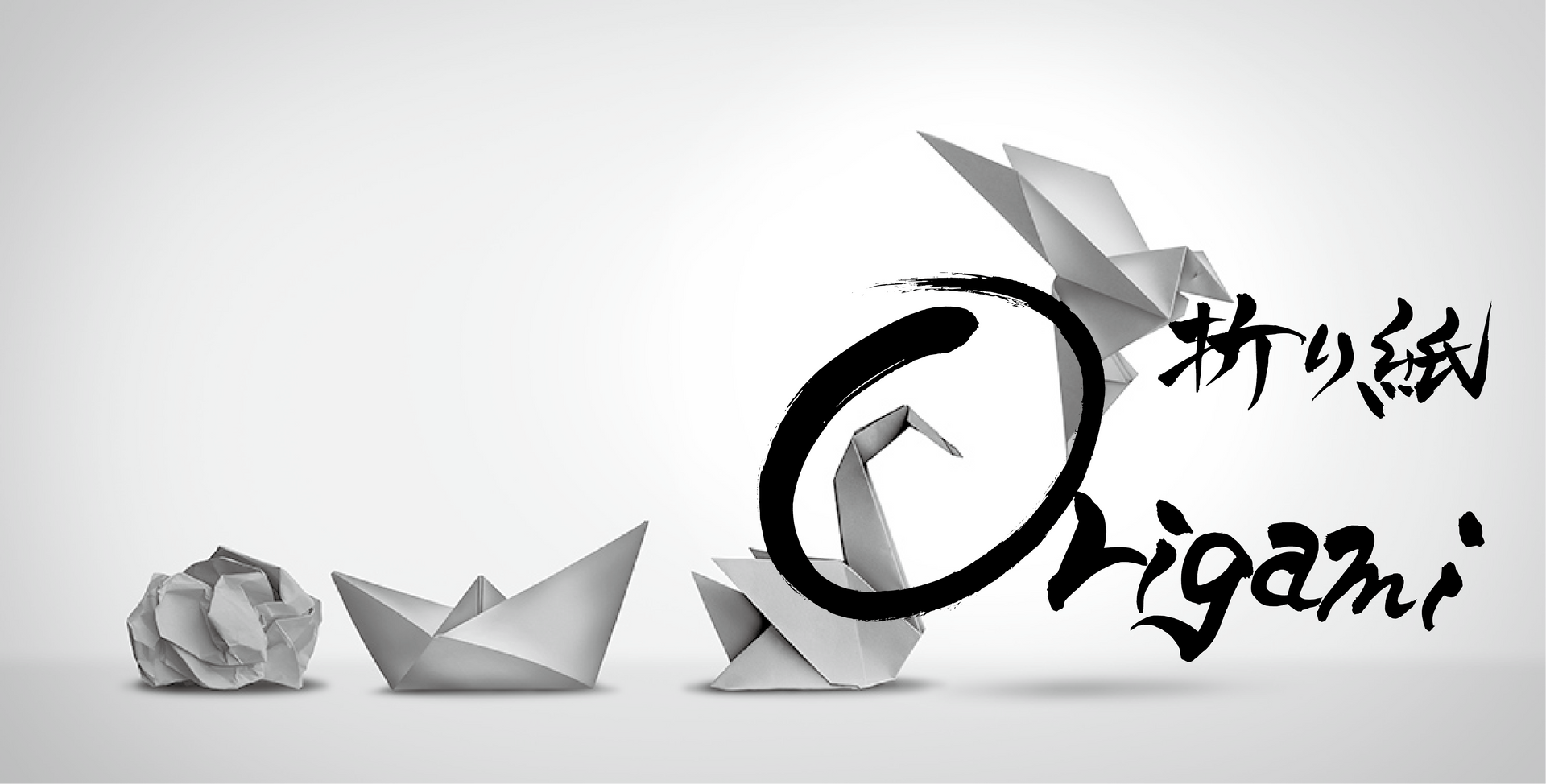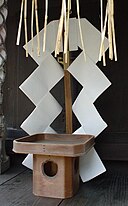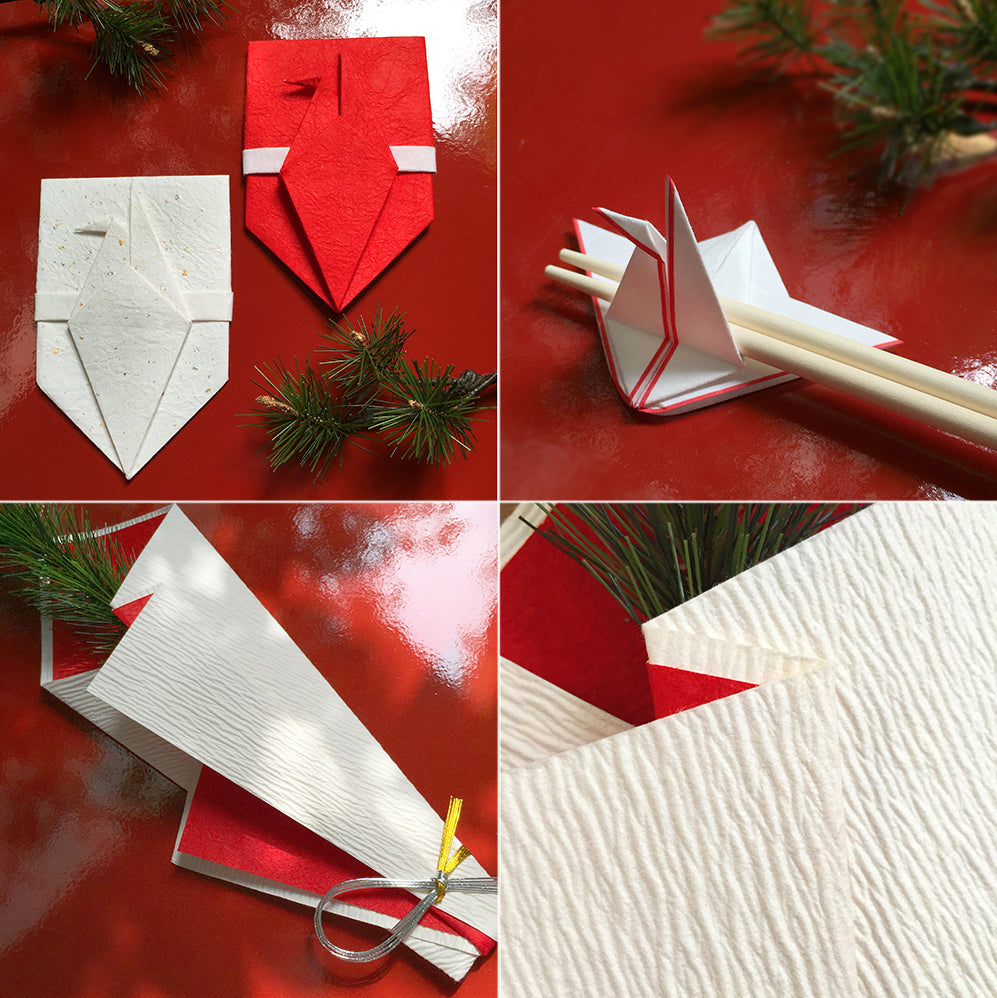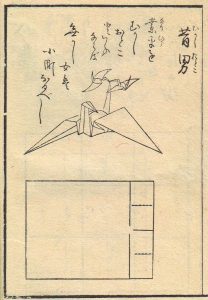
2. History: 1. The origins of washi paper

During the Asuka period (7th century), the method of making paper was introduced from the continent and "paper" was born.
The oldest record of paper in Japan, the "Nihon Shoki," suggests that papermaking techniques were introduced.
Since then, Japan has independently improved its papermaking techniques, and "washi" paper was formed.
As technology improved and paper became more widespread, it is thought that paper decorations began to be made for use in Shinto rituals, offerings, and other things, such as shrine purification offerings, gohei (sacred wands), and shide (paper streamers).
2. History - 2. Ritual Origami

People began wrapping various things, such as offerings to the gods, in paper. Eventually, people noticed that the paper would crease when wrapping offerings and gifts, and so ceremonial folding was born, in which the wrapping was beautifully folded and decorated.
Paper decorations and gift wrapping methods gradually became stylized, and various etiquette rules were established during the Muromachi period (14th to 15th centuries). The etiquette for wrapping gifts in paper (gireori) was also devised around this time.
It was established as a code of etiquette unique to the samurai class.
2. History- 3. Recreational Origami

Origami is a form of paper folding that is free from etiquette and rules and allows people to enjoy the process of folding itself.
"Yuugi origami" has existed since the Muromachi period. As the name suggests, it is "origami for play." However, at the time, washi paper was a luxury item, so it was only enjoyed by a few wealthy people.
During the Edo period (early 17th century), paper production increased and origami became more popular among the common people.
The world's oldest origami book, "Hide Senbazuru Orikata," was published in 1797. "Hide Senbazuru Orikata" is the oldest verifiable book on "play origami."
This book introduces "linked cranes," which are multiple connected cranes folded from a single piece of paper.
2. History - 4. School Education

The first kindergarten in Japan was the Tokyo Women's Normal School Kindergarten (now the Ochanomizu University Kindergarten), and in 1877 the kindergarten included "tatamigami" (what we now call origami) in its curriculum.
The following year, in 1878, "Youchienho Nijyuuki" was published, in which origami was introduced as "surishigami."
After that, handicrafts and art began to be taught in elementary schools, and the arts became even more popular.
Nowadays, origami has spread all over the world, and many origami enthusiast groups have been formed and are still active.
